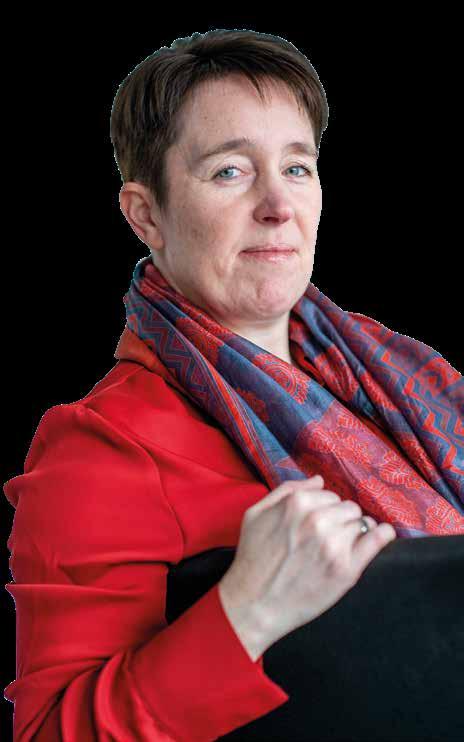
2 minute read
Naar minder trucks op de baan
from Insights DP World
by Goo Media
De regio Antwerpen staat voor een modal shift: tegen 2030 mag de auto nog hoogstens de helft van alle verplaatsingen uitmaken. Port of Antwerp is nog ambitieuzer en wil zijn aandeel in het aantal trucks op de baan onder die grens parkeren.
“Tegen 2030 willen we 15 procent van de containers op de trein en 42 procent op het binnenschip”, zegt Mobility Advisor Containers bij Port of Antwerp Dominique Vercauteren. Voor het spoor betekent dat een verdubbeling. “We zetten sterk in op Duitsland en meer specifiek op de Rijnregio. De Rijn is een solide rivier, maar door de klimaatverandering zien we dat schepen niet maximaal geladen kunnen worden tijdens droogteperiodes. De komende jaren zetten we dus prioritair in op extra spoorverbindingen om dat op te vangen.”
Voor de binnenvaart valt er dan weer veel winst te rapen op de korte afstanden. “Vanuit België en Zuid-Nederland rijden nog veel trucks naar of van Antwerpen. Een deel kan switchen naar de binnenvaart. We zien dat al binnen de haven, voor de trafiek van de linker- naar de rechter-Scheldeoever. Er zijn al heel wat bedrijven die duurzaamheid opnemen in hun doelstellingen, maar andere moeten die mental shift nog maken”, aldus Vercauteren. “Onze rol hierin? Actief met de verladers in gesprek gaan en het ruime aanbod van Antwerpen onder de aandacht brengen. Daarin staan we niet alleen: ook onze partners, zoals de terminals en de binnenvaart- en spooroperatoren, dragen die boodschap mee uit. Ook met de Vlaamse overheid werken we nauw samen aan incentives om de modal shift te verwezenlijken.”


Fewer trucks on the road
The Antwerp region is on the verge of a modal shift: by 2030 cars should account for no more than half of all journeys. The Port of Antwerp is even more ambitious and wants its share of trucks on the road to be below that limit.
“By 2030 we want 15% of containers to be transported by train and 42% by barge,” says mobility advisor containers at Port of Antwerp Dominique Vercauteren. For rail, that means doubling the current number. “We’re focusing strongly on Germany and more specifically the Rhine region. The Rhine is a solid river, but ships cannot be loaded to maximum capacity during dry periods due to climate change. In the coming years, we’ll therefore be prioritising additional rail connections to compensate this.”
Barge transport can still make a lot of headway in terms of short distances. “Many trucks still drive from Belgium and the southern Netherlands to or from Antwerp. Some of them could switch to barges. We’ve already noticed this within the port, for traffic from the left to the right bank of the Scheldt. Several companies already include sustainability in their objectives, but others still have to make that mental shift,” says Vercauteren. “Our role in this? To have an active discussion with the freighters and highlight the wide range of services Antwerp has to offer. And we’re not alone in this: our partners, such as the terminals and barge and rail operators, think like this too. We’re also working closely with the Flemish government on incentives to achieve the modal shift.”










